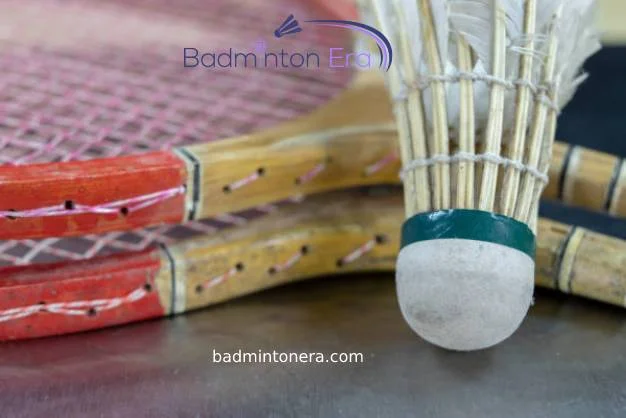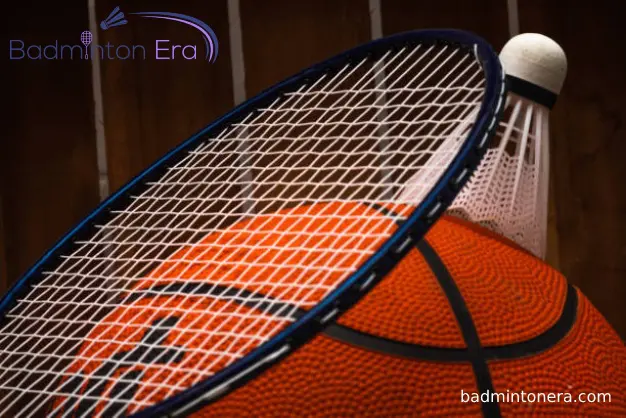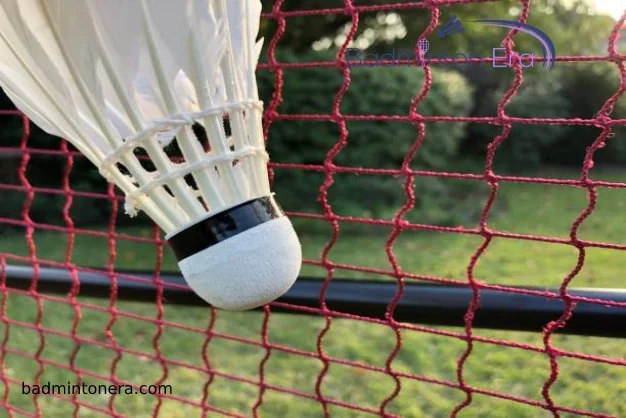What is the difference Between 2 Knots and 4 Knots Badminton?
Badminton is the game of racquets and shuttle-cocks. In this game, you need to know the difference between 2 knots and 4 knots badminton for your skill, technique, and playing style are of extreme importance. To keep up your career in the badminton world, you have to be determined and competent. Along with these features, we cannot ignore the importance of equipment in your performance.
Whether a beginner or a professional player, you must choose a badminton racquet that suits your style. Racquets can differ based on the shaft, grip, or string bed. The string bed is an essential element in choosing the badminton racquet because it plays a vital role in the game. Some factories provide unstrung rackets so that you can string them according to your suitable style. There are two main methods of racquets stringing, which we name two knots and four knots stringing methods. Which stringing style of the racquet is best for you? It is a question that you can only answer after getting all information about the two methods. In this article, you will get a comparison of two knots versus four knots of badminton racquets.
difference Between 2 Knots and 4 Knots Badminton

What is meant by two and four knots?
Stringers strung two-knot racquets using a single piece of string. In these racquets, there is one starting knot and the other ending knot. It clearly describes that the same string piece makes mains and crosses in the string bed of the badminton racquet. The string bed will have four knots if the stringer uses two pieces of string. One piece will make mains and other crosses. Hybrid stringing is also a pattern resulting from four-knot stringing. In hybrid stringing, two different materials are available for stringing. One material for the mains of the whole racquet head and the other for crosses of the racquet.
Differences between two knots and four knots in badminton racquets:
The two stringing methods of badminton racquets create huge differences, which we must know before racquet selection. Some of these differences are:
Neatness:
The first and unique difference is neatness. You must go for a two-knot badminton racquet if you care about the neatness of the racquets. Two-knot badminton racquets are neater because there is a single starting and one ending knot. There are four knots in the string bed if we talk about the two-piece stringing method. Two knots are the start and end points of mains, while the other two of crosses. So, if you are going for four-knot badminton racquets, you must compromise for neatness.
Hybrid stringing:
In the present day, hybrid stringing has become a trend. Its popularity is undeniable. Four knots stringing is only a method through which we can manufacture hybrid strung racquets. Why we select a hybrid-strung racquet is a question that will intrigue your attention in this article. “To blend different types of strings”, is what hybrid stringing means. Two materials we mostly use in hybrid strung badminton racquets are: natural gut and nylon. The natural gut string makes the mains of the racquet, while nylon makes crosses. Strings of different thicknesses, stringer can also blend in hybrid string racquets. The most common benefit of this stringing for players are:
- Lower cost
- Increased durability
Hybrid stringing is not possible in the two knots method because you have to make the complete bed with a single piece of string.

Tension:
The third difference between two-knot and four knots in badminton racquets is tension. We measure racquet string tension in Ibs or Kg. There is a slight drop in the string tension when the stringer makes final knots. In the case of two knots, there is a lesser tension decrease than in four knots. This is because two-piece stringing requires four knots which causes more drop in tension.
How is string tension vital for badminton players? Tension in string determines effective force on the shuttle and the area of the sweat spot. In two knots racquet, sweat spot is limited only to the center. So, it is best for expert players to make powerful shots for competitors. There are more chances of missed hits if you are a beginner or an intermediate player. These levels require large sweat spots so that they can make precise shots and minimize the number of missed hits. You must select four knots of badminton racquet if you are an intermediate player. It will give you more strength and power in smashes.
Some people think that high-tension racquets provide strength in smashes. It is a misconception because high tension is only beneficial for experts. Hitting Sweet spot precisely, they make strong smashes Otherwise, you will get injuries to the shoulder and elbow using two knots badminton racquets.
Frame distortion:
The next difference is frame distortion. The chances of frame distortion increase if you select two knots of a badminton racquet. Stress on the frame during weaving is also high in the case of one-piece stringing. The stress on the frame decreases when you have two strings for badminton stringing. The extent of string stiffness depends on the method of stringing. In the standard methods, the stringer pulls mains and crosses to the same tension, but there is different tension for mains (24Ibs) and crosses( 26Ibs). The tension in mains and crosses may be the same if the stringer is consistent in stringing. In four knots racquet, the stringer deals with two pieces of string, and there is less frame distortion.
Why is the stringing method important?
Consider the stringing method while selecting a badminton racquet because it affects your life a lot in the badminton world. Best string racquets will help you to give your best in tournaments and championships. The stringing method means how to start and end the weaving pattern on the racquet frame. The way string runs through the racquet frame making mains and crosses, makes difference in your performance. Benefits of well-strung badminton racquets include:
- Better playing experience
- Protection of racquet frame
- Stringing quality
String Composition:
Along with stringing methods, the quality of string material is also essential. String material determines the stiffness and resiliency of the string. Some strings are monofilament, but others are multifilament. In contrast to monofilament strings, multifilaments contain thousand of fibers twisted together. They will provide more stiffness for expert players. Monofilament strings are best for beginners and intermediate players. Are you curious about strings, which are the best for badminton racquets? Yonex’s Aerosonic Strings are best for badminton because they are the thinnest strings providing the best repulsion power to the shuttlecocks.

Why do I always prefer four knots badminton racquets?
As two knots and four knots, badminton racquets have their own positive and negative aspects, but two-piece strung racquets are of great importance to me. The reason behind this
- appears as its tension is more suitable for my intermediate level.
- decreased chances of frame distortion
- The string will not break easily
- The durability of the racquet is higher
Not only for players, but the four knots method is also best for stringers because it becomes much easier to handle two pieces of string. They also need not worry about faults resulting from complicated patterns.
Now you can select which badminton racquet is according to your choice and suits your style. It will make you a dominant player in the badminton world.







